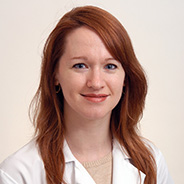Session Track
Track 1 - Gastroenterology
The study of the function and diseases of the throat, small digestive tract, stomach, colon and rectum, gallbladder, bile channels, pancreas, and liver is known as gastroenterology. It includes a point-by-point examination of the normal action (physiology) of the gastrointestinal organs, such as material movement through the stomach and digestive system, absorption and retention of supplements in the body, waste removal from the body, and the capacity of the liver as a digestive organ.
Pancreatic disease
Transplantation
Gastrointestinal cancer
Endoscopic monitoring
Track 2 - Intestinal and Colorectal Disorders
Gastrointestinal diseases are illnesses that affect the gastrointestinal tract, specifically the throat, stomach, small digestive tract, internal organ and rectum, and the digestive organs, the liver, gallbladder, and pancreas. Obstructing, irritable inside clutter, hemorrhoids, butt-centric gaps, perianal abscesses, butt-centric fistulas, perianal contaminations, diverticular illnesses, colitis, colon polyps, and infection are all examples of gastrointestinal issues. A large number of these can be anticipated or limited by living a healthy lifestyle, practicing extraordinary entrails inclinations, and submitting to tumor screening.
Irritable bowel syndrome (sensitive colon, spastic colon)
Anal disorders (internal and external hemorrhoids)
Diverticular disease
Polyps and cancer
Colitis
Track 3- Diseases of the Esophagus
The esophagus is a solid cylinder that transports food and fluids from your mouth to your stomach. You may be unaware of your esophagus until you swallow something extremely large, extremely hot, or extremely cold. You may also notice it when something isn't quite right. You may feel tormented or have difficulty swallowing. GERD is the most well-known throat problem (gastroesophageal reflux disease). When you have GERD, a muscle at the end of your esophagus does not close properly. This allows stomach contents to spill back into the throat and irritate it. GERD can cause throat damage over time.
Esophageal atresia
Esophageal cancer
Esophageal dysphagia
Esophageal varices
Esophagitis
Caustic injury to the esophagus
Track 4- Pathology of Gastrointestinal Bleeding
One of the most common complaints of patients is gastrointestinal bleeding, which can be interminable, mild, or fatal. Most conditions, for example, GI bleeding, are managed without the involvement of others, yet they are still evaluated to keep a strategic distance from a repeat and to avoid any advance movement of sickness. Gastrointestinal pathology (including the liver, gallbladder, and pancreas) is regarded as a sub-specialty of surgical pathology. Recognition of a subspecialty is commonly associated with dedicated fellowship training offered within the subspecialty or, on the other hand, to surgical pathologists with a special interest in and broad involvement in gastrointestinal pathology.
Peptic ulcer
Esophagitis
Inflammatory bowel disease (IBD)
Hemorrhoids
Anal fissures
Track 5- Gallstones and Stones in the Bile Duct
Gallstones in the bile duct are known as bile duct stones. They can form in the gallbladder and then move into the bile duct, or they can form entirely in the bile duct. Stones can become lodged in the bile duct, causing it to become blocked. Gallstones and bile duct stones (also known as choledocholithiasis) are the same thing; they're just in different parts of your body. Stones may pass through the bile duct on their own. However, when a stone becomes lodged in the bile duct, medical intervention is required because irritation, bacterial infection, and even severe organ damage can occur.
Open Cholecystectomy
Laparoscopic cholecystectomy
Track 6- Viral Gastroenteritis and Gastrointestinal Infection
Gastrointestinal infections are infections caused by viruses, bacteria, or parasites that cause gastroenteritis, an irritation of the gastrointestinal tract that includes both the stomach and the small intestine. Diarrhea, vomiting, and abdominal pain are among the symptoms. Because dehydration is the most common cause of gastrointestinal infections, rehydration is critical; however, most gastrointestinal infections are self-limiting and resolve within a few days. Viral gastroenteritis is an infection of the intestine that causes watery diarrhea, abdominal cramps, nausea or vomiting, and, in some cases, fever. The most common way to contract viral gastroenteritis, also known as stomach flu, is through contact with an infected person or by consuming contaminated food or water.
Bacterial
Viral
Parasitic
Nanoviruses
Rotavirus
Track7- Gastroparesis
Gastroparesis is a medical term for delayed stomach emptying. It is caused by damage to the vagus nerve, which runs from the brain to the stomach, and is commonly associated with type 1 and type 2 diabetes. Diabetes' uncontrolled high blood sugar (glucose) levels harm nerves and veins throughout the body, including the vagus nerve in the gastrointestinal tract. Idiopathic gastroparesis is a similar condition with no known cause. It is treated in the same way that diabetes-related gastroparesis.
Chronic nausea
Vomiting
Abdominal pain
A feeling of fullness
Track 8-Microbiome of the Gut
The gut microbiome is made up of billions of bacteria and other microorganisms that live in the lower intestine alongside human cells. The gut microbiota aids digestion, immune function, and brain health. Our gut microbiome develops from birth and is influenced by genetics, delivery method, age, stress, illness, environment, drug use, and diet. A few factors can upset our gut's 'balance,' which can lead to inflammation, a major risk factor for physical and mental health problems. Diseases and the Gut Microbiome.
Clostridium difficile Infection (CDI)
Inflammatory Bowel Disease (IBD)
Celiac Disease
Obesity
Track 9- IBD (Inflammatory Bowel Disease)
Inflammatory Bowel Disease (IBD) is an idiopathic disease caused by an abnormal immune response to intestinal microflora. The two major types of IBD are ulcerative colitis (UC), which affects only the colonic mucosa, and Crohn's disease (CD), which affects any system of the gastrointestinal tract from the mouth to the buttocks, includes "skip sores," and is transmural. IBD has a hereditary predisposition, and patients with this condition are more likely to develop cancer.
Track 10- Advances in Gastrointestinal Endoscopy
A technique called gastrointestinal endoscopy enables your doctor to view the interior of your throat, stomach, and the underside of your small intestine. An endoscope (scope), a flexible, thin review device, is used. It is easier to see inconspicuous damage, such as small, flat polyps and patches of dysplastic gastrointestinal mucosa, while using high-definition and magnification endoscopes with electronic chromo zooscopic capabilities. They enable accurate representation of polyps, allowing us to subsequently specifically resect just precancerous colonic polyps while ignoring small, considerate hyperplastic polyps, leading to significant healthcare cost savings.
Chromo endoscopy
Narrow-Band Imaging
Flexible Spectral Imaging Color Enhancement
I-Scan
Magnifying Endoscopy
Track 11- Gastroenterology, both diagnostic and therapeutic
Diagnostic and therapeutic ERCP for pancreatitis pathologies (papillotomy, stone extraction, stricture dilation and stenting, lithotripsy, paroral choledochoscopy and pancreatoscopy), endoscopic ultrasonography with fine needle aspiration cytology and biopsy, and target treatment are just a few of the advanced diagnostic and therapeutic endoscopic procedures offered by Therapeutic and Diagnostic Gastroenterology. Other cutting-edge techniques include radiofrequency ablation, cryotherapy, and endoscopic mucosal resection as treatment for Barrett's esophagus and early cancer. Some of these diagnostic gadgets need to be disinfected before use because they can spread infections
Injection sclerotherapy
Argon plasma coagulation
Dilatation
Polypectomy
Track 12- Gastrointestinal Imaging and Radiology
For the purpose of taking pictures of the stomach, throat, digestive tract, and other elements of the stomach-related structure, gastrointestinal radiology, or GI Imaging, uses a barium-based distinct texture and a state of continual x-beam known as fluoroscopy. It is safe, non-invasive, and may be accustomed to help utterly destructive reflux, examine pain, blood in the stool, & other adverse symptoms. Despite the widespread use of fiber optic endoscopy, barium examinations of the gastrointestinal system, enterocolitis for the evaluation of the small bowel, and traditional radiography still have a place in medicine.
Gastrointestinal Radiology
Genitourinary Radiology
Abdominal Computed Tomography (CT)
Abdominal Magnetic Resonance Imaging (MR)
Track13-GI Oncology
The gastrointestinal tract tumors as well as any extra organs that exhibit symptoms of internal death, such as excruciating pain, swelling, failure to process, difficulty swallowing, ongoing obstruction, or extreme loose stools. The two types of gastrointestinal disorders are lower gastrointestinal tract tumors and upper gastrointestinal malignancies. If there is a doubt or blister, finding necessitates an endoscope followed by a biopsy. Diseases affecting the esophagus, stomach, pancreas, liver, gall bladder, and MALT are included in upper stomach associated tract malignancies. Colorectal cancer, butt-centric development, large and small gastrointestinal tract cancers, retroperitoneum, and carcinoid tumor are all lower stomach-related tract diseases.
Esophageal Oncology
Stomach Oncology
Pancreatic Oncology
Liver Oncology
Gallbladder Oncology
Gastrointestinal tumor
Anal Oncology
Track 14-Medical Pharmacology of the Gastrointestinal
Since they work by influencing the central and peripheral nervous systems to control mood, instinctive and neuropathic pain, as well as autonomic function, in part through anticholinergic effects, medications used to treat depression, anxiety, and seizures have become increasingly appealing specialists for use in functional gastrointestinal disorders. The pharmacological therapies for gastrointestinal disorders are divided into two classes: those that are prescribed by doctors and those that are sold over the counter (OTC Drugs). The drugs are provided in light of issues with the digestive system, the gastrointestinal tract dividers, and the gastrointestinal motility
Peptic ulcers and gastroesophageal reflux disease (GERD)
Chemotherapy-induced emesis
Diarrhea
Constipation
Track 15-Transplants for gastrointestinal conditions
The most common gastroenterological transplants have involved the liver, pancreas, esophagus, small intestine, and colon. Since a transplant is a serious medical process, the peace must be observed during and after the procedure. The majority of the time, issues develop following surgery when the body starts to reject the joint or organ. The goal of a liver transplant is to remove the diseased or damaged liver and replace it with a whole modern solid liver or a portion of the liver from a different/healthy individual, known as a donor. People who have severe or ongoing liver failure require a liver transplant to survive.
Track 16- Primary & Abdominal Care
Discomfort under the rib cage and above the pelvic area is commonly referred to as abdominal pain or a stomach ache. Abdominal pain may result from an inflammation that affects the pancreas, liver, gallbladder, kidneys, small or large intestines, appendix, spleen, stomach, or gallbladder. Viral, bacterial, or parasite infections that affect the intestines and stomach can result in excruciating abdominal pain. Abdominal discomfort is normally diagnosed by your primary care physician after examining your physical symptoms and indicators. Treatment for abdominal pain depends on the potential underlying causes of the pain, the patient's age, and medical history.
Track 17- Advanced in Hepatology
The study, prevention, analysis, and treatment of infections that affect the pancreas, gallbladder, liver, and biliary systems are the focus of the medical field known as hepatology. Hepatitis C virus infection will no longer be a problem in the future of hepatology; a different problem has emerged. Hepatitis C virus is no longer the most common cause of chronic liver illnesses in western nations; instead, obesity, metabolic disorders, and related non-alcoholic fatty liver diseases have taken its place. Molecular biology, medicines, imaging, and surgery have made incredible strides that have greatly aided our understanding and ability to treat children with liver problems. There is currently no upper age or weight limit for recipients of liver transplants thanks to surgical breakthroughs.
Track 18- Liver diseases and Hepatitis
Hepatitis is a viral infection-induced inflammation of the liver tissues that damages the organ and can result in cirrhosis, fibrosis, and liver cancer. Hepatitis is a fatal disease that damages the liver slowly over time. In the Middle East, hepatitis A is the most typical cause of acute hepatitis in children. All newborns and high-risk groups should be vaccinated against HBV, and donor blood should be screened as well. Hepatitis therapy has advanced recently as a result of consistent improvements, leading to novel medicines that may provide relief. Liver illnesses can be contracted (inherited) or brought on by a variety of factors that damage the liver.
Five types of Hepatitis-
Hepatitis A
Hepatitis B
Hepatitis C
Hepatitis D
Hepatitis E
Track19-Pregnancy and Gastroenterology
Emotional changes are a result of pregnancy's typical physiological changes in the gastrointestinal (GI) system. Therefore, pregnancy poses a unique medical challenge to the GI tract and, for some women, is a time of vulnerability for the emergence of new GI illnesses or an aggravation of preexisting ones. These progressions can result in brand-new symptoms, exacerbate an already-existing illness, or conceal a potentially harmful condition. Absence of participation in addressing these symptoms might have obliterating effects. The doctor must be able to determine if these symptoms are those of a typical pregnancy or indicate a potentially fatal complication like preeclampsia. Additionally, the doctor needs to be aware of which medications and tests are safe to administer during pregnancy.
Nausea and vomiting
Gastroesophageal reflux
Constipation
Track 20-Pancreatic Cancer and Tumor
When aberrant pancreatic cells proliferate unchecked and develop into a tumor, pancreatic cancer begins. The exocrine and endocrine cell types both of which are present in the pancreas and perform a variety of tasks, are both present. Exocrine tumors are thought to account for about 94% of pancreatic cancer cases. The exocrine cells that produce pancreatic enzymes, which aid in digesting, are where the tumors first appear. In this category, adenocarcinomas make up the majority of tumors. The percentage of pancreatic neuroendocrine tumors is approximately 6%. Surgery, chemotherapy, radiation therapy, or a combination of these therapies may all be used to treat pancreatic cancer.
Prevention-
Stop smoking
Maintain a healthy weight
Choose a healthy diet
Track 21-Hepato-pancreato-biliary disease
The term "hepatic-pancreatic-biliary disease" refers to any disorder that affects the bile ducts, gallbladder, liver, or pancreas. These illnesses frequently have similar symptoms or signs in common, such as jaundice, darker urine color, and lighter stool color. While some have inherited or hereditary causes, the majority result from persistent injury to the tissues of the implicated organs. Hepatologists, hepato-pancreatic-biliary oncologists, and transplant experts treat and manage these disorders.
Liver cancer
Gallstones
Pancreatic cancer
Track22-Minimally Invasive Surgery and Gastrointestinal
The stomach and gastrointestinal tract are two major topics in gastrointestinal surgery. The management of the central nervous system, immunology, focused care, digestion, neoplasia, nutrition, pathology, physiology, shock and revival, and wound healing are all tasks performed by general specialists. Modern minimally invasive surgery, which can incorporate robotic-assisted methods, calls for millimeter-long incisions. The tiny incisions create a passageway for specialized surgical tools and a laparoscope, a fiber-optic equipment that is inserted into the abdomen wall. The less invasive method has benefits like quicker recovery times, shorter hospital stays, and less blood loss after surgery.
Track23-Bariatric surgery and obesity
Obesity has emerged as a global health issue that aggravates a number of hazardous and incapacitating illnesses, such as type 2 diabetes mellitus and coronary artery disease. Weight-reduction surgery, often known as bariatric surgery, uses a variety of procedures on obese patients. This is accomplished by using a gastric band to reduce the size of the stomach, by removing a portion of the stomach, by resecting and redirecting the small intestine to a small stomach pouch, or by any combination of these methods.
Genetics
Psychology
Lifestyle
Track 24 - Motility and Neurogastroenterology
The natural movement of food from the mouth hole to the rectum through the intestinal tract, known as peristalsis, promotes the assimilation of dietary supplements. These peristaltic compressions take place when the gut's muscle layers and the nerves that are placed in them work in unison. Gut motility problems can be related to disorders in other organ systems. Understanding the parts of the enteric, sympathetic, and parasympathetic divisions of the gastrointestinal tract is made easier by neurogastroenterology. On every surface of our body, neurons are visible. We may experience and perform both intentional and involuntary tasks as a direct result of these neurons.
For example, the central nervous system, mitochondrial disorders, muscular dystrophies and others. .
Esophageal issues
Gastric disorders
Small bowel issues
Colon issues
Track 25- Dietetics in Gastroenterology and Nutrition
The study of nutrients in food, how the body uses supplements, and the relationship between diet, health, and infection are all parts of nutrition. The metabolism and metabolic pathways (biochemical stages) via which substances inside the body are transformed beginning with one structure and moving on to the next have come to dominate discussions on nutrition. Probiotics have many benefits, including easing constipation, boosting immunological function, and lowering gastrointestinal stress. Single cell proteins and dietary enzymes can both be utilized as supplements.
Market Analysis
Gastrointestinal Therapeutics Market
The gastrointestinal therapeutics market is expected to register a healthy CAGR of nearly 6.5 % during the forecast period (2019 - 2024). According to market research, North America had the largest global revenue for gastrointestinal drugs in 2016 with a total of 17,288 US dollars million, whereas the Middle East and Africa continent had a low revenue creation rate. A CAGR of 3.5 percent is predicted for the market for prescription medicines, taking it from $18.6 billion in 2016 to roughly $22.1 billion in 2021. (approx.). With a CAGR of 5.9% from 2017 to 2021, the global diagnostics market will increase from $17.7 billion in 2019 to $23.5 billion in 2022.
According to market research, North America had the largest global revenue for gastrointestinal drugs in 2016 with a total of 17,288 US dollars million, whereas the Middle East and Africa continent had a low revenue creation rate. A CAGR of 3.5 percent is predicted for the market for prescription medicines, taking it from $18.6 billion in 2016 to roughly $22.1 billion in 2021. (approx.). With a CAGR of 5.9% from 2017 to 2021, the global diagnostics market will increase from $17.7 billion in 2019 to $23.5 billion in 2022.
By 2020, the market for gastrointestinal treatments is anticipated to grow to a value of around USD 13.8 billion, with a CAGR of 6.5 percent from 2016 to 2020. This increase in market size is attributable to a number of factors, including rising biologics consumption, preliminary approval of late-stage molecules, development of medicines using cutting-edge technology, and an increase in the population seeking treatment.
Inflammatory Ulcerative Colitis Holds Significant Market Share
The condition known as inflammatory ulcerative colitis (UC) frequently recurs. Lifelong therapy is frequently used to treat the condition. The present therapy choices, however, have a number of negative side effects and subpar efficacy characteristics. Additionally, the drug might be very expensive in some cases, which makes this market profitable for the biopharmaceutical companies. Inflammatory bowel illness can benefit from some conventional therapeutic types, such as corticosteroids, 5-aminosalicylic acid, and immune-modulating medicines (IBD). Several biologic medications, including anti-TNF medications, immunosuppressive interleukins, and anti-interleukin antibodies, have been approved for use in recent years. Merck & Co. Inc. (2018) reports that, despite the availability of a variety of pharmaceutical options, one-third of all UC patients ultimately need surgery.
Top companies:
Allergan Pharmaceuticals
Boston Scientific
Evoke Pharma
Johnson & Johnson
Physicians Endoscopy
Synergy Pharmaceuticals
Salix Pharmaceuticals
Shaili Endoscopy
Takeda Pharmaceuticals USA
US Endoscopy Group
Associations and Societies of Gastroenterology
European Association for Gastroenterology, Endoscopy & Nutrition
United European Gastroenterology
European Society of Gastrointestinal Endoscopy
European Society of Gastroenterology and Endoscopy Nurses and Associates
The Japanese Society of Gastroenterology
The Korean Society of Gastroenterology
The Italian Society of Gastroenterology
Italian society of Digestive Disease
United European Gastroenterology
Hepatology Society of the Philippines
American Gastroenterological Association
British Society of Gastroenterology
American Society for Gastrointestinal Endoscopy
Gastroenterological Society of Australia
European Board of Gastroenterology and Hepatology
United European Gastroenterology
The European Society for Pediatrics Gastroenterology Hepatology and Nutrition












